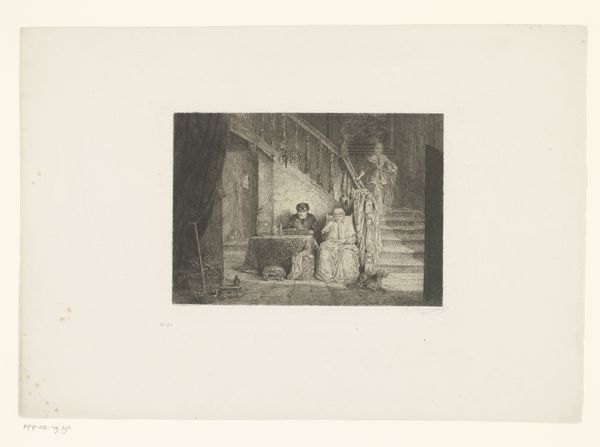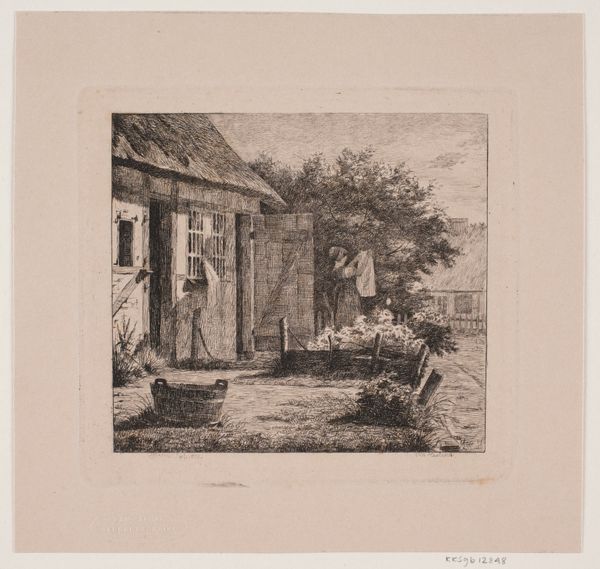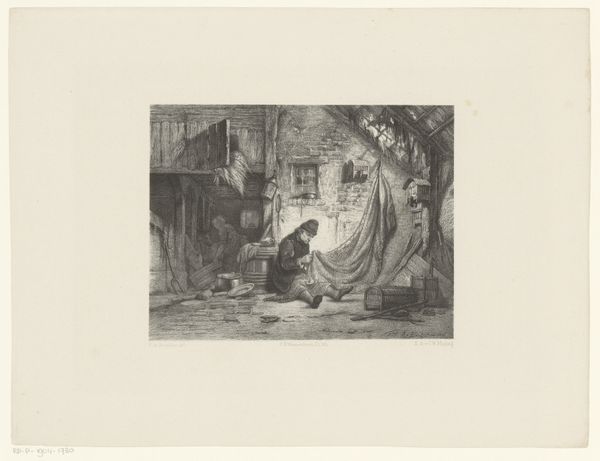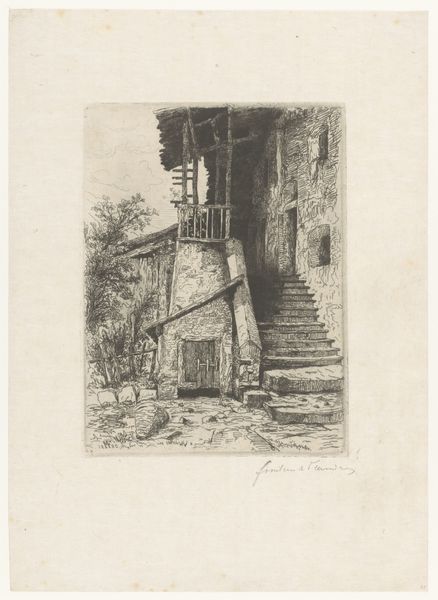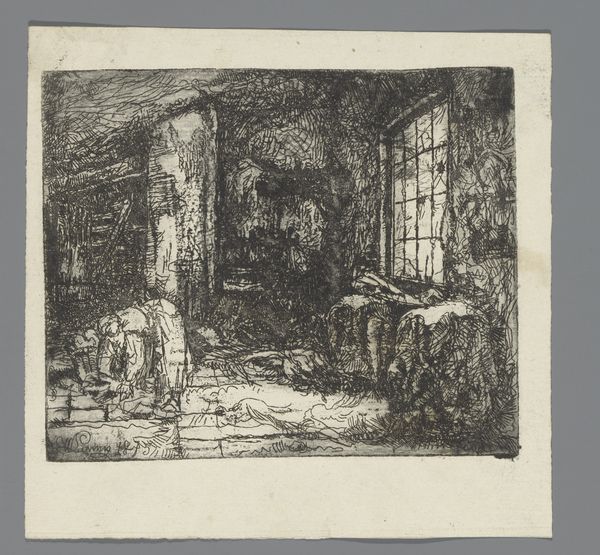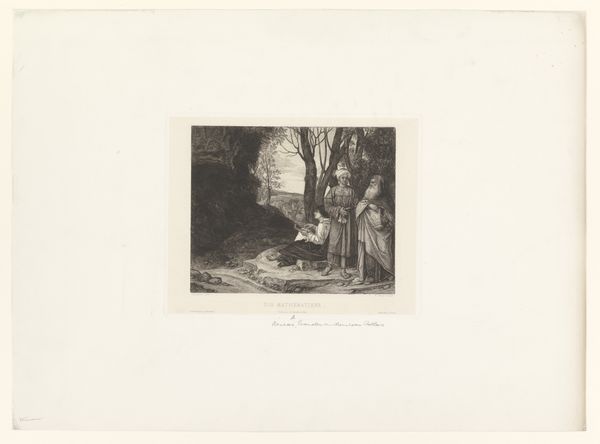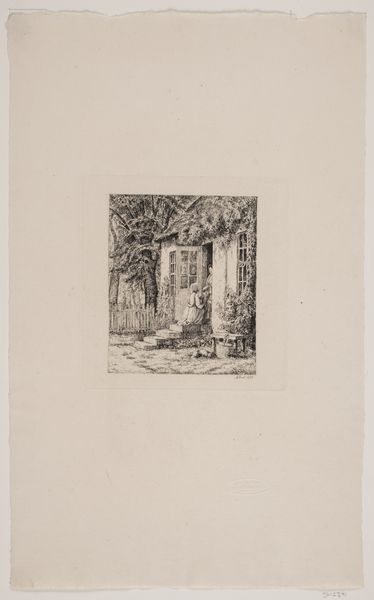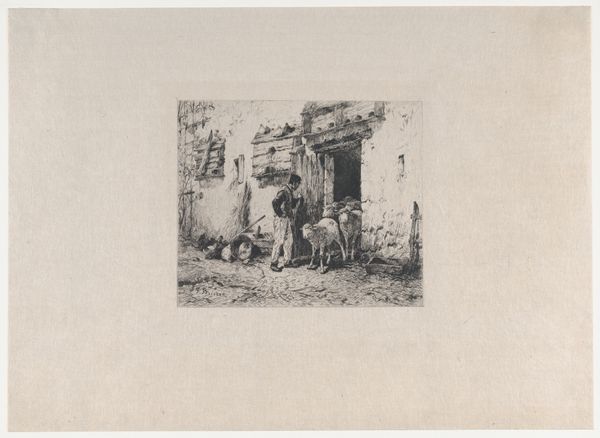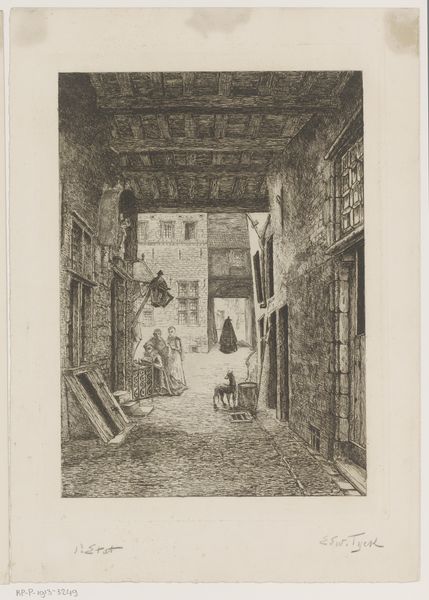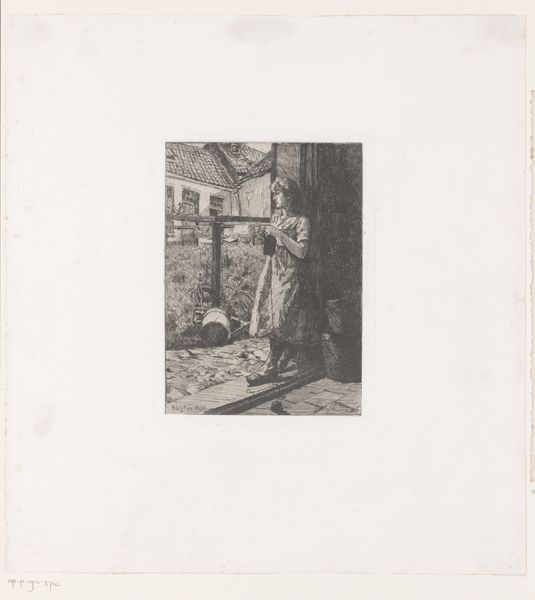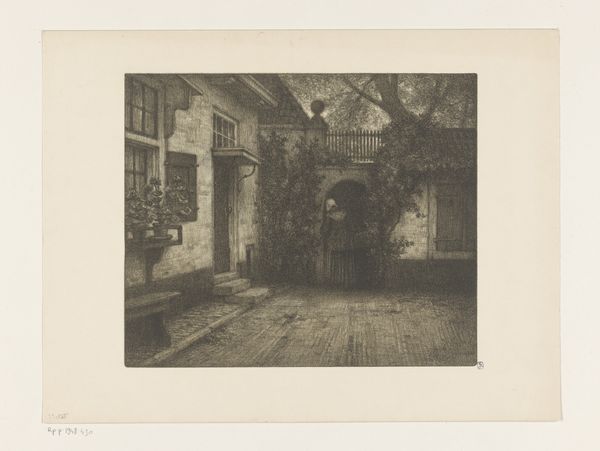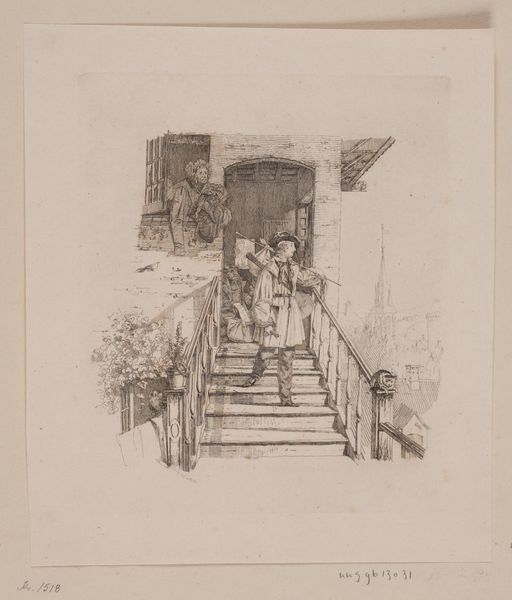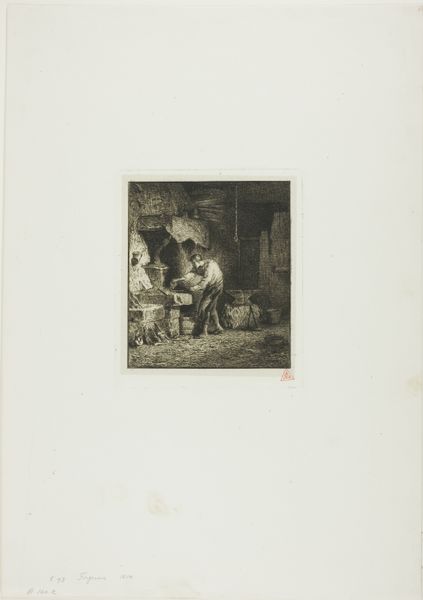
drawing, print, etching, paper
#
drawing
#
narrative-art
# print
#
etching
#
landscape
#
paper
#
genre-painting
#
academic-art
#
realism
Dimensions: height 188 mm, width 227 mm
Copyright: Rijks Museum: Open Domain
Editor: So, this is "Beggar at the Door of a Farmhouse," an etching by Frans Van Kuyck, made sometime between 1862 and 1911. It's a very detailed scene, and honestly, quite somber. What strikes you when you look at this print? Curator: I notice immediately the emphasis on the dwelling and its materiality. Consider the thatched roof, the rough-hewn stones, the tools leaning against the wall – each element speaks to the labour required to construct and maintain this meager existence. Look at the layers and techniques. What paper did they use and how does the color change the impression? How does the plate show signs of wear? Editor: It definitely feels like the artist wants us to focus on that labor, the reality of daily life for these people. Curator: Precisely. Etchings, like this one, were often reproduced, allowing wider distribution of such images. Think about who consumed these prints and why? Did it influence social reform? This brings forward questions about class and power structures, doesn’t it? How does that oversized kettle impact our reading? Editor: It does make you think about how little the beggar probably has compared to the residents inside, despite their humble home. It feels critical. Curator: The print medium itself reinforces that critical lens, enabling wider access to images of social inequality, but also generating income through the market. How does it all coalesce? Editor: I hadn't thought about it that way, the print being both a commentary on poverty and a commodity. Thank you, that has changed my understanding of the work. Curator: Indeed. The material reality of art is so very important. And how that reality can shift how a piece is interpreted, as well as how it functions within society.
Comments
No comments
Be the first to comment and join the conversation on the ultimate creative platform.
